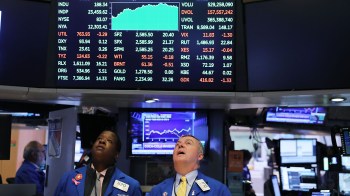
September’s real wages are expected to rise

The Bureau of Labor Statistics releases the latest producer price index and the all-important consumer price index this week. These will be some of the key numbers the Federal Reserve pores over to gauge whether inflation is moderating enough to negate the need for another interest rate hike at the end of the month.
And this matters to the rest of us, workers and consumers, not because we make interest rate policy, obviously, but because we make spending decisions hourly and daily, driving the economy. Decisions based on prices — how much is going out — and based on wages — how much is coming in.
The balance between them determines the purchasing power of our incomes after accounting for inflation. It’s our standard of living, how we’re doing in this topsy-turvy economy.
Americans’ average hourly earnings were 4.2% higher in September than one year ago, according to the BLS.
September’s consumer price index is expected to show that prices rose about 3.6%.
Back of the envelope calculation: Wages after accounting for inflation will likely be about 0.6% higher than one year ago.
Former Bureau of Labor Statistics Commissioner Erica Groshen explained what this means to a typical household with paychecks coming in and spending going out: “If you see an increase in people’s paychecks, subtract the inflation rate from that, then you get how much their buying power has increased.”
That’s real wages. And for the last several months, they’ve been rising on an annual basis as pay increases have outpaced price increases.
But go back a year, to August 2022, and the reverse was true: Workers’ real wages were down 2.7%.
Now, said Groshen, workers are “making up for the consumption power that they lost when prices were rising faster than wages.”
And workers may never fully recover all the ground they’ve lost.
“We have seen wage growth slow down, month to month,” said Frank Fiorille, who tracks wages at small-business payroll firm Paychex.
Still, we’ve already had a few months of real wages going up, said John Leer at public opinion firm Morning Consult.
“Consumers are definitely more willing to buy higher-than-expected goods and services. And I think that is a reflection of their personal finances being strengthened as inflation cools a little bit, and then wage gains remain fairly robust,” Leer said.
So far, rising wages have benefited low-wage workers the most.
The real wages of production and nonsupervisory workers have risen 0.9% over the past year, compared to just 0.5% for workers overall.
There’s a lot happening in the world. Through it all, Marketplace is here for you.
You rely on Marketplace to break down the world’s events and tell you how it affects you in a fact-based, approachable way. We rely on your financial support to keep making that possible.
Your donation today powers the independent journalism that you rely on. For just $5/month, you can help sustain Marketplace so we can keep reporting on the things that matter to you.

















